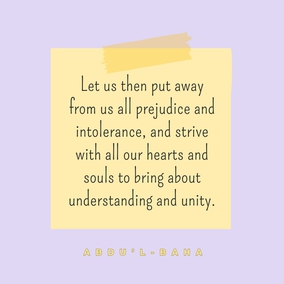The views expressed in our content reflect individual perspectives and do not represent the authoritative views of the Baha'i Faith.
Did you watch the sun rise this morning?
The Sun of Reality is one Sun but it has different dawning-places, just as the phenomenal sun is one although it appears at various points of the horizon. During the time of spring the luminary of the physical world rises far to the north of the equinoctial; in summer it dawns midway and in winter it appears in the most southerly point of its zodiacal journey. These day springs or dawning-points differ widely but the sun is ever the same sun whether it be the phenomenal or spiritual luminary. Souls who focus their vision upon the Sun of Reality will be the recipients of light no matter from what point it rises, but those who are fettered by adoration of the dawning-point are deprived when it appears in a different station upon the spiritual horizon. – Abdu’l-Baha, Baha’i World Faith, p. 255.
In this quotation Abdu’l-Baha gives us a parable, a beautiful analogy of the appearance of the Divine Revelations to the physical Sun.
I’m an early riser, and have watched many stunning sunrises, breathtaking in fact, a miracle of existence. The yellows, reds, oranges and purples; the effect of glinting off innumerable versions of cloud cover, white, dark or gray and their shadows, all create a unique sunrise for my eyes every morning. In my view, nothing holds more absolute truth than a glorious sunrise.
Of course, every morning we see the same physical sun rise, the only one that provides humanity with light and heat. It rises from a slightly different “dawning place” on the eastern horizon every day. We watch the sunrise, but we all know the sun doesn’t really “rise,” since it remains stationary. Instead, the Earth’s surface rotates into its beams, and the Earth’s orbit around the sun gives us the slight variation in each successive morning’s dawn.
Western civilization generally credits the ancient Greek astronomer Aristarchus of Samos [310-23 B.C.] as the first person to figure that out, and to propose a Sun-centered astronomical hypothesis of the universe. At that time, however, Aristarchus’s heliocentrism gained few supporters, and eighteen centuries would then pass before the Renaissance astronomer Nicolaus Copernicus produced a fully predictive mathematical model of a heliocentric system.

Here we have classic scientific investigation of truth—or rather, reality, if you consider both to mean the same thing. It may be said that “truth” as often refers to abstract rather than concrete thinking, and it can be said that “reality” deals more the concrete rather than abstract, such as the example above, a “mathematical model” based on observable fact.
The point the Baha’i teachings make here? Different versions of the same truths exist, as well as the terms used to describe that truth, or reality—but the truth itself is one.
The truth is one, but our accepted concepts or beliefs change, because our viewpoint changes. We are after all fallible, imperfect humans, not gifted with perfect understanding and knowledge at any particular moment on any particular subject. In other words, we make our smartest guess about truth and reality, and then direct our lives on that basis.
That’s as it should be, because truth, no matter what form or reality it takes, always changes and evolves. The insights of philosophers and scientists have shown us the changing nature of reality for ages. You and I discover or change truth and reality every moment of every day, primarily through our experiences and knowledge.
So how do we recognize the truth? The Baha’i teachings recommend investigating the truth for yourself, and coming to your own conclusions:
God has given man the eye of investigation by which he may see and recognize truth. He has endowed man with ears that he may hear the message of reality and conferred upon him the gift of reason by which he may discover things for himself. This is his endowment and equipment for the investigation of reality. Man is not intended to see through the eyes of another, hear through another’s ears nor comprehend with another’s brain. Each human creature has individual endowment, power and responsibility in the creative plan of God. Therefore depend upon your own reason and judgment and adhere to the outcome of your own investigation; otherwise you will be utterly submerged in the sea of ignorance and deprived of all the bounties of God. Turn to God, supplicate humbly at His threshold, seeking assistance and confirmation, that God may rend asunder the veils that obscure your vision. Then will your eyes be filled with illumination, face to face you will behold the reality of God and your heart become completely purified from the dross of ignorance, reflecting the glories and bounties of the Kingdom. – Abdu’l-Baha, Foundations of World Unity, p. 75.
Let me end this with a question for you: by what yardstick of truth do you judge reality?
















Comments
Sign in or create an account
Continue with Googleor